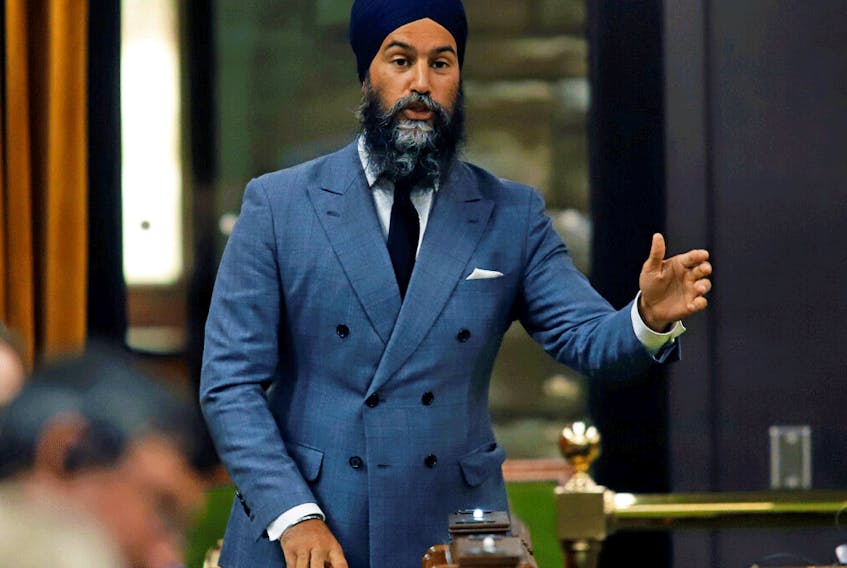OTTAWA — It is becoming tedious to keep warning that we’ll pay for the government’s improvidence, like a joyless man of the cloth admonishing his flock for their self-indulgence.
An anxious electorate has indicated broad support for renewed income benefits and paid sick leave, which is understandable as the second COVID-19 wave washes in. The latest weekly survey by Leger suggests 52 per cent of Canadians believe the plan presented in the throne speech will strengthen the economy.
“These are things we can’t afford not to do,” said Finance Minister Chrystia Freeland — the standard explanation from politicians about to spend other people’s money.
Calls for circumspection are deemed to lack sympathy and compassion. And then there are low debt servicing costs, which are guaranteed to remain below 10 per cent of tax revenues until the end of time, or so we’re assured.
A new report by the Parliamentary Budget Office will doubtless be wheeled out in support of this worldview. The PBO assumes that the pandemic, and accompanying public health measures, will be with us for another 12-18 months. But crucially, it also assumes the spending will be withdrawn at the end of this fiscal year.
The PBO’s model expects a budgetary deficit of $328.5 billion, or 15 per cent of GDP, in 2020-21, which takes into account the extension of the Canada Recovery Benefit but not measures announced in last week’s throne speech. That number is lower than the $343 billion, the government indicated in its summer fiscal snapshot.
The projection anticipates a deficit of $73.8 billion in 2021-22, with the budgetary shortfall reverting to more typical levels by the middle of the decade.
Yves Giroux, the Parliamentary Budget Officer, said that federal government’s finances at this level are sustainable, “but, really, barely.”
“It wouldn’t take that much in terms of new spending, or even tax cuts, for federal debt to become unsustainable,” he said.
The concern for those of us who look forward with trepidation is that our parliamentarians seem intent on extending temporary measures in perpetuity. In that circumstance, reducing the deficit to a “mere” $74 billion next year would become impossible.
The Liberals have signed a Faustian pact with the NDP that they seem intent on honouring until they have a large enough lead in the polls, at which point the New Democrats will be cut loose and patronized as being erratic and unreliable.
Remarkably, the NDP seems fine with this.
Jagmeet Singh, the party’s leader, told the Huffington Post’s Althia Raj that his goal is to use his ability to tip the balance of power in Parliament to push measures that “support people” — a plan that could see him backing the Trudeau government for another three years.
The party’s national director, Anne McGrath, told the National Post future negotiations will be aimed at making their gains permanent. “There are things that should exist during a pandemic, but also not during a pandemic,” she said.
Peter Julian, the NDP MP, said his party aims to use its influence to press the Liberals to create a wealth tax — which shouldn’t take too much arm-twisting, given the throne speech included a commitment to “identify additional ways to tax extreme wealth inequality.”
It wouldn’t take that much in terms of new spending, or even tax cuts, for federal debt to become unsustainable
Canada is currently being run, for better or worse, by an informal social democratic coalition, committed to income redistribution, regulation of the economy and generous social welfare provision. It is becoming impossible to look at the Liberals and NDP and say which is which.
History suggests it is an intimacy that carries electoral risk for the NDP.
The party is lucky to have McGrath. She is a veteran of the Jack Layton years and may be able to convince Singh when there is no longer electoral advantage to moving in lockstep with the Liberals.
Layton withdrew his support from Paul Martin’s government in the fall of 2005, when the gains being extracted no longer outweighed the risk of assimilation. In my opinion, they are already beyond that inflection point but perhaps they can still extract some credit from progressive voters.
Regardless of the partisan manoeuvring, the fiscal implications of the Liberal-NDP liaison are unsettling.
The CERB was meant to be replaced by a less generous program. Yet the Canada Recovery Benefit was enriched to $500 a week as part of the price for the NDP’s support in the House of Commons. That translates to $26,000 a year, the equivalent of a minimum wage job in most provinces.
The wage subsidy was redesigned to wind down, with less funding available over time. It will now run until next summer, with no indication that support will be reduced.
In all, the PBO identified $225.9 billion in COVID relief measures that were meant to be temporary. If they prove not to be, we are by the PBO’s definition, drifting toward unsustainability.
The country remains in the grip of COVID but it is not too early to start pouring the black coffee that will be needed to mitigate the inevitable hangover.
• Email: [email protected] | Twitter: IvisonJ
Copyright Postmedia Network Inc., 2020








